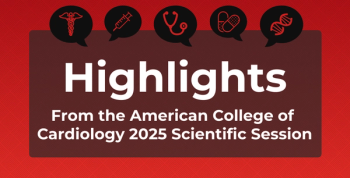
Dr Krishna Sundar Differentiates Between Obstructive, Central Sleep Apnea
Much of the population experiences disordered breathing at night, explained Krishna M. Sundar, MD, clinical professor, Pulmonary Division, Department of Medicine, and medical director, Sleep-Wake Center, University of Utah.
Much of the population experiences disordered breathing at night, but more people are familiar with obstructive sleep apnea than they are central
Transcript
How do obstructive sleep apnea and central sleep apnea differ?
So these disorders affect breathing at night, which a significant proportion of the population experiences. Most folks are familiar with obstructive sleep apnea, which is a disorder characterized by collapsing of the upper airway, which is the portion of the airway just behind your throat, during sleep, and that happens because the muscles which keep this passage relatively open, they relax at night when you’re sleeping on your back. There tends to be narrowing, and each time you breathe in, you’re sucking air. You create a negative pressure that causes the passage to collapse with the inhaled airflow. So that's obstructive sleep apnea. And that's characterized with snoring and pauses in breathing and often gasping awakenings that many people are familiar with.
The other disorder is something called central sleep apnea. So when we talk about pauses in breathing, it can either happen due to obstruction, which happens in obstructive sleep apnea, or because there can be a pause in breathing, because the breathing center—which is located in the brainstem, or the lower portion of the brain—so that breathing center fires impulses, which drive each breath, basically. And in central sleep apnea, because the control of breathing changes during sleep, there are pauses in breathing because this respiratory generator is not firing the necessary impulses in a periodic manner as happens during wakefulness.
And that's another disorder, which probably not as prevalent as obstructive sleep apnea, is often seen in disorders such as heart disease, heart failure, particularly; in neurologic conditions; and people that are on opiates. The opiate epidemic, this has become a matter of great interest because it appears that a substantial proportion of those who die from opioid overdose, they die a respiratory death in which there is actually a stoppage of breathing.
So occurrence of central apnea is typically especially during sleep, may be a marker. Again, we don't know; that’s yet to be proven, but it may be indicative of susceptibility to opiate-related respiratory depression. But more than that, central sleep apnea can be seen in a variety of conditions. One of the unique aspects of central sleep apnea is often tends to occur in a setting of obstructive sleep apnea.
So both of these disorders, especially when central apnea occurs, it occurs in the background of obstructive sleep apnea, and to separate out, and the relevance of both and what is driving the other, requires some understanding of what we call the pathophysiology of these problems.
Newsletter
Stay ahead of policy, cost, and value—subscribe to AJMC for expert insights at the intersection of clinical care and health economics.












































